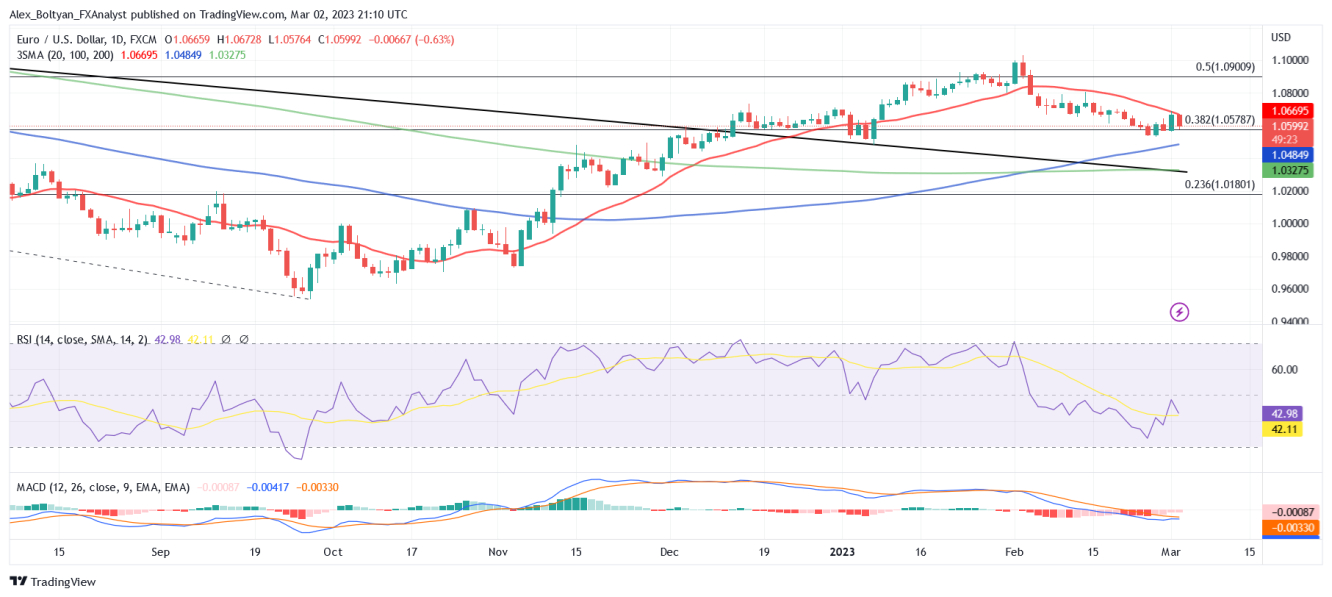The EUR/USD pair came under pressure on Thursday, reversing most of the previous day’s gains, despite stronger-than-expected inflation data from the Eurozone. At the same time, the dollar benefited from rising U.S. bond yields amid mounting concerns about global inflationary pressures.
When writing, the EUR/USD pair is trading at 1.0603, 0.59% below its opening price, after being rejected from a daily high of 1.0672. Meanwhile, the dollar measured by DXY Index is trading just beneath the 105.00 mark, recording a 0.55% gain on the day.
In the Old Continent, the inflation rate, measured by the preliminary Harmonized Index of Consumer Prices (HICP), increased to 8.5% over the year to February, above the 8.2% expected. The core inflation rate was 5.6% in the same period versus the 5.3% expected. Following the data release, the yield on the 10-year German Bund pulled back after setting fresh multi-annual highs and stands at 2.75%.
Across the pond, U.S. Treasury yields are exhibiting strong performance, with the United States 10-Year rate at 4.07%. The 2- and 5-year yields also advanced to 4.9% and 4.32%, respectively.
The European Central Bank (ECB) also released the latest meeting minutes, which didn’t provide new information. The accounts showed that Governing Council members agreed more rate increases would be necessary.
From a technical standpoint, the EUR/USD maintains the short-term bearish outlook according to indicators on the daily chart as the RSI and MACD are both declining, pointing to a possible downward continuation. At the same time, the pair’s advances remain capped by the 20-day SMA, which acts as solid dynamic resistance, currently at 1.0670.
The immediate support level is seen at the weekly lows at 1.0525, followed by the 1.0500 psychological mark, reinforced by the 100-day SMA, and then the January low at 1.0483. On the other hand, the bulls need to break above the 20-day SMA to pave the way toward 1.0700 and potentially to the 1.0750 area.


